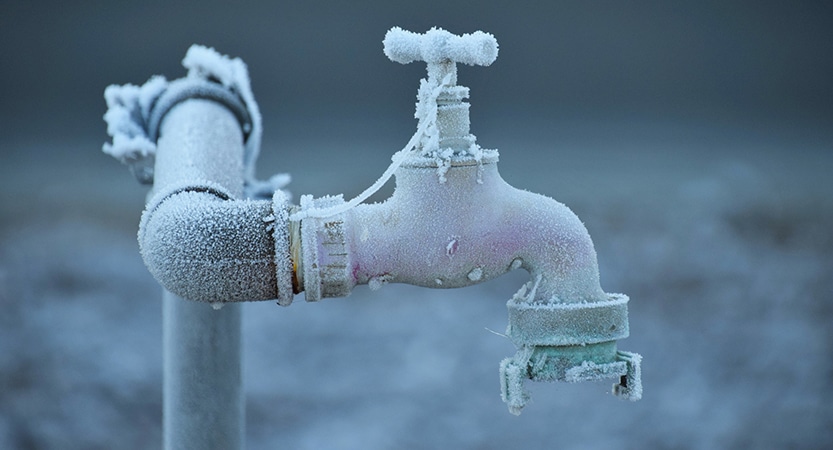Preventing Frozen Plumbing: Effective Strategies for Cold Weather
Preventing Frozen Plumbing: Effective Strategies for Cold Weather
Blog Article
Every person maintains their own way of thinking in relation to Winter Plumbing Precautions: Preventing Frozen Pipes.

Winter can damage your plumbing, especially by freezing pipes. Right here's just how to prevent it from taking place and what to do if it does.
Introduction
As temperature levels drop, the danger of frozen pipes rises, potentially causing pricey repairs and water damage. Comprehending just how to prevent frozen pipelines is crucial for property owners in chilly environments.
Comprehending Frozen Pipes
What causes pipes to freeze?
Pipelines ice up when subjected to temperatures below 32 ° F (0 ° C) for extended periods. As water inside the pipes freezes, it expands, taxing the pipe wall surfaces and potentially creating them to break.
Dangers and problems
Frozen pipelines can bring about water supply interruptions, residential or commercial property damages, and costly repairs. Burst pipelines can flood homes and cause extensive structural damage.
Indications of Frozen Water Lines
Recognizing icy pipes early can prevent them from bursting.
How to identify frozen pipelines
Seek decreased water flow from taps, unusual odors or sounds from pipelines, and visible frost on revealed pipes.
Avoidance Tips
Protecting susceptible pipelines
Wrap pipes in insulation sleeves or utilize warmth tape to shield them from freezing temperature levels. Focus on pipelines in unheated or outside locations of the home.
Heating methods
Keep indoor spaces properly heated up, specifically areas with plumbing. Open cabinet doors to allow warm air to circulate around pipelines under sinks.
Protecting Outside Plumbing
Yard hose pipes and exterior faucets
Detach and drain pipes garden pipes before winter months. Install frost-proof spigots or cover outside taps with insulated caps.
What to Do If Your Pipes Freeze
Immediate actions to take
If you presume icy pipelines, maintain taps open up to eliminate pressure as the ice melts. Make use of a hairdryer or towels soaked in warm water to thaw pipes gradually.
Long-Term Solutions
Structural adjustments
Think about rerouting pipelines away from outside wall surfaces or unheated areas. Include additional insulation to attic rooms, basements, and crawl spaces.
Upgrading insulation
Buy top notch insulation for pipes, attics, and walls. Correct insulation aids preserve consistent temperature levels and lowers the danger of frozen pipelines.
Final thought
Preventing icy pipes needs positive procedures and fast reactions. By recognizing the causes, indications, and preventive measures, house owners can protect their plumbing during cold weather.
5 Ways to Prevent Frozen Pipes
Drain Outdoor Faucets and Disconnect Hoses
First, close the shut-off valve that controls the flow of water in the pipe to your outdoor faucet. Then, head outside to disconnect and drain your hose and open the outdoor faucet to allow the water to completely drain out of the line. Turn off the faucet when done. Finally, head back to the shut-off valve and drain the remaining water inside the pipe into a bucket or container. Additionally, if you have a home irrigation system, you should consider hiring an expert to clear the system of water each year.
Insulate Pipes
One of the best and most cost-effective methods for preventing frozen water pipes is to wrap your pipes with insulation. This is especially important for areas in your home that aren’t exposed to heat, such as an attic. We suggest using foam sleeves, which can typically be found at your local hardware store.
Keep Heat Running at 65
Your pipes are located inside your walls, and the temperature there is much colder than the rest of the house. To prevent your pipes from freezing, The Insurance Information Institute suggests that you keep your home heated to at least 65 degrees, even when traveling. You may want to invest in smart devices that can keep an eye on the temperature in your home while you’re away.
Leave Water Dripping
Moving water — even a small trickle — can prevent ice from forming inside your pipes. When freezing temps are imminent, start a drip of water from all faucets that serve exposed pipes. Leaving a few faucets running will also help relieve pressure inside the pipes and help prevent a rupture if the water inside freezes.
Open Cupboard Doors
Warm your kitchen and bathroom pipes by opening cupboards and vanities. You should also leave your interior doors ajar to help warm air circulate evenly throughout your home.

We hope you enjoyed our article about Preventing and dealing with frozen pipes. Many thanks for finding the time to read through our piece. If you appreciated our blog posting if you please be sure to pass it around. Thanks for taking the time to read it.
Details Here Report this page